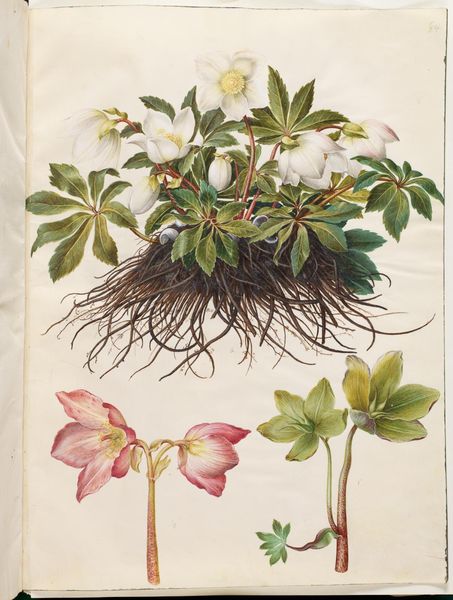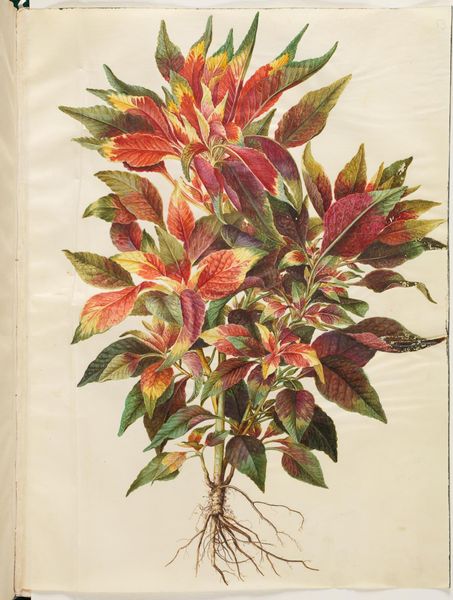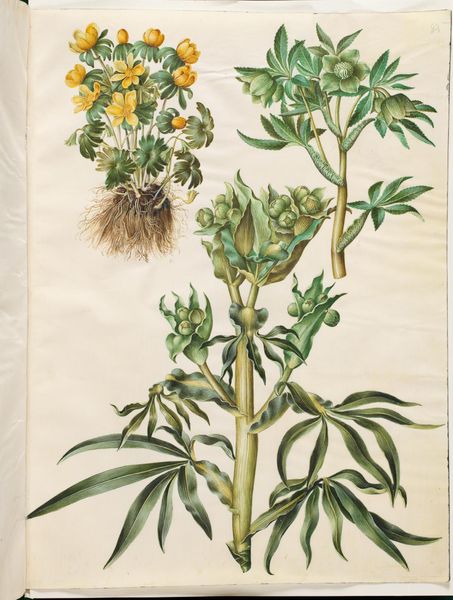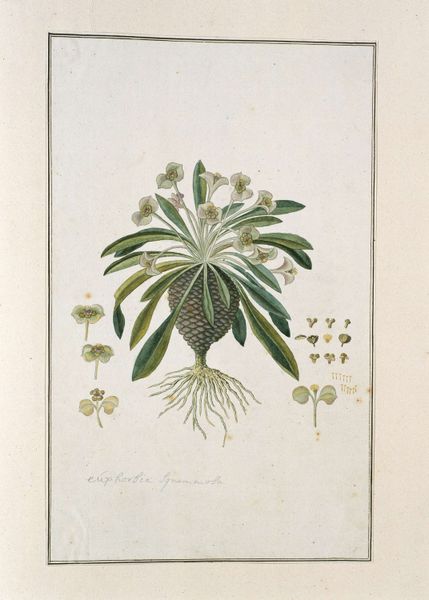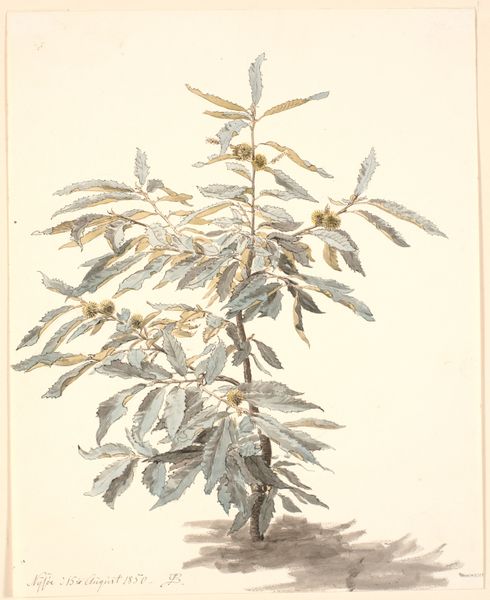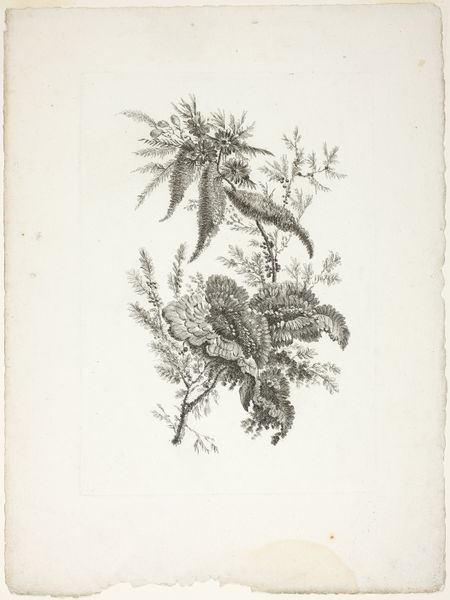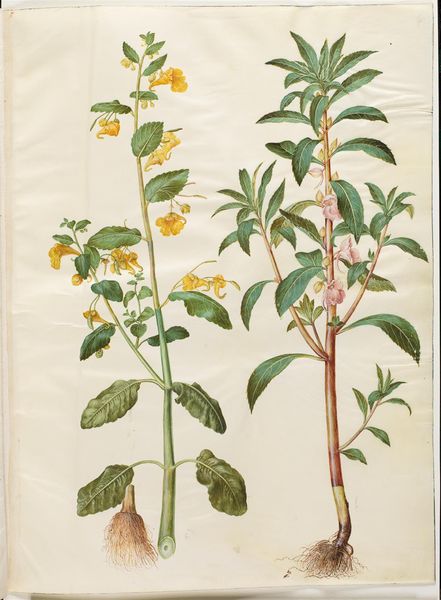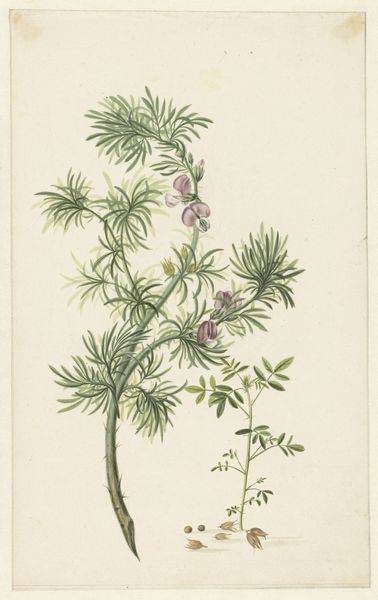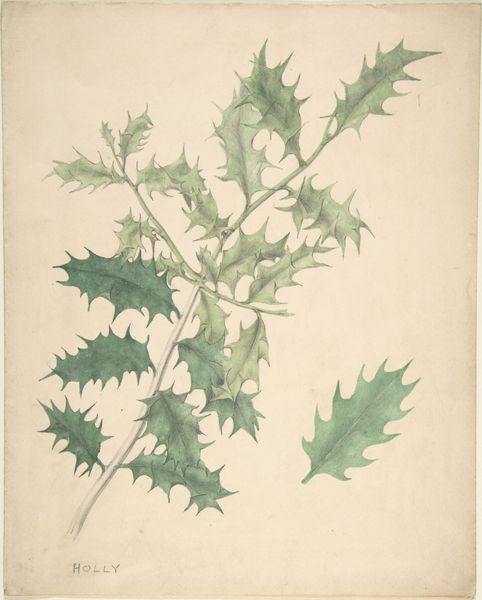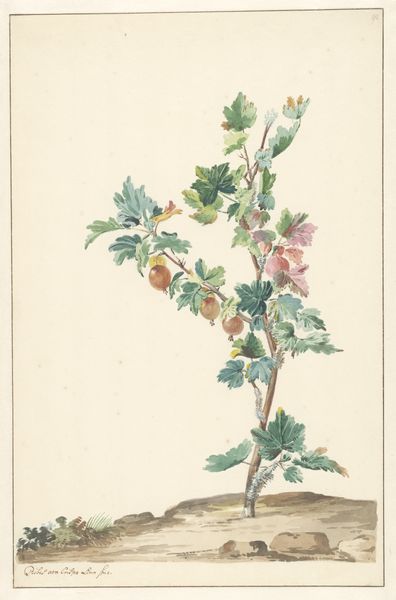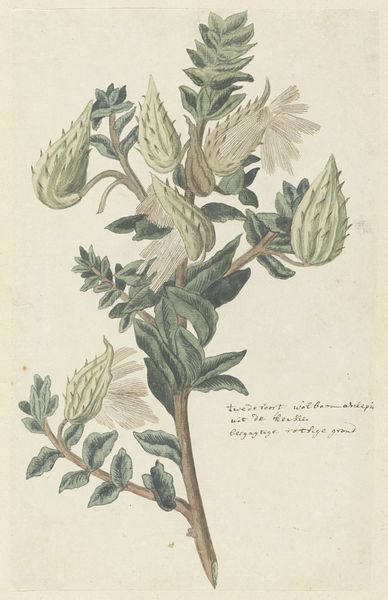
Mimosa polydactyla (mangefingret mimose) 1649 - 1659
0:00
0:00
drawing, gouache, watercolor
#
drawing
#
water colours
#
dutch-golden-age
#
gouache
#
11_renaissance
#
watercolor
#
botanical art
Dimensions: 505 mm (height) x 385 mm (width) (bladmaal)
Curator: This captivating botanical drawing is titled "Mimosa polydactyla (mangefingret mimose)," and it's attributed to Hans Simon Holtzbecker, created sometime between 1649 and 1659. It is currently part of the collection at the SMK, the National Gallery of Denmark. Editor: The crisp detail and radiating forms—it strikes me as incredibly vibrant, even luminous. The textures almost vibrate on the page. The intricate radial placement of the leaves, juxtaposed with the exposed root system is quite stunning. Curator: Holtzbecker was a pivotal figure in documenting the natural world, particularly for scientific study and the elite gardens that were becoming status symbols. Works like this reflect the growing power and reach of natural philosophy, now called science. The plant itself, being from the Americas, shows us the growth of trade networks during that era. Editor: Absolutely. And the artist's choice of medium —watercolor and gouache—serves this purpose perfectly. The fluidity allows for detailed representations of the leaves and the almost translucent quality of the roots, yet creates a depth that accurately replicates the way we would encounter such plants in situ. Note too the artist’s incredible control of line. Curator: Such botanical drawings served crucial functions; scientific documentation, certainly, but they were also highly prized artworks that indicated the patron's knowledge and their refined appreciation of nature, reflecting a humanist ideal. One had to cultivate and study nature and make use of that knowledge. Editor: There’s an inherent tension in representing nature so faithfully while extracting it from its natural context. It makes me think of the rise of taxonomy; attempting to order and control nature through visual and intellectual means. Curator: The meticulous observation really showcases how art could be instrumental in shaping and disseminating scientific thought. We have to remember that knowledge wasn’t only transferred through text. Images held real authority. Editor: A superb example of the intersection of science and art in the Dutch Golden Age. I'm really struck by the drawing's blend of aesthetic beauty and exacting scientific precision. Curator: Indeed. Holtzbecker’s careful work serves as a time capsule, reflecting the botanical interests and social currents of the 17th century, giving us a lens into the past.
Comments
No comments
Be the first to comment and join the conversation on the ultimate creative platform.
